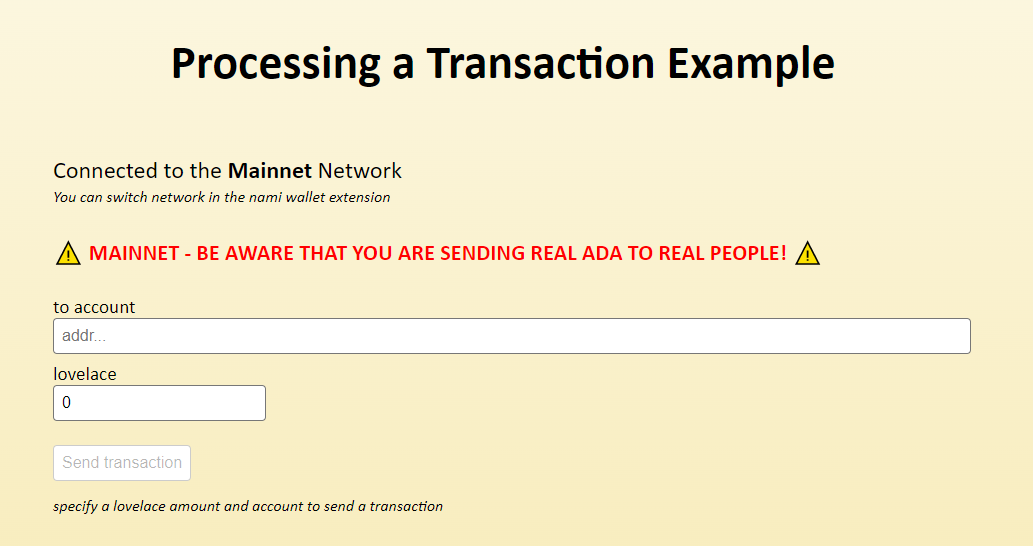Always be careful when interacting with the blockchain. Misuse can result in a loss of funds. This is only a technical example, and should be treated as such, I don't take any responsibility for any damage it might cause.
This repository is a simplified example of how to proxy blockfrost requests, and does good to serve as a reference. If you are looking for a complete solution of integration lucid and blockfrost in a React or Next.js project, you should check out use-cardano with use-cardano-blockfrost-proxy. If you want a ready-to-use Next.js starter kit, have a look at Cardano Starter Kit.
This is an example repo for using a proxy for the Lucid Blockfrost provider, so that the Project Id is not leaked to the client, as discussed in this github issue.
The example itself allows you to send a transaction over either testnet or mainnet.
This repo uses next.js and React. The code itself is also quite React-ish, building mainly on custom hooks. I don't necessarily suggest building your code like this, but since I have to deal with network changes, this was a suitable pattern.
This is a standard next.js project, with only one page; pages/index.tsx. All the important code is located in the hooks folder.
- Forwards all blockfrost requests via the
pages/api/[[...all]].tsroutes, making it possible to hide your blockfrost keys - The keys are injected via env variables (see the
.env.templatefile) - Handles both
mainnetandtestnet - Listens to network changes using the
experimentsapi that - in this case - nami injects
Since the Lucid package doesn't seamlessly support network changes, I had to keep track of it in states. Not sure I like this pattern, but it is what it is. Not sure if there are any implications to doing it this way.
The proxy API might not be 100% compatible with the blockfrost API. IE. if there are any unforeseen issues, the API will return an empty 400 response, which the Lucid Blockfrost provider might be incompatible with. I will research this more. Improvements are welcome.
Just send an issue and/or PR my way if you have improvement suggestions. Much welcome.
MIT, see LICENSE file.

